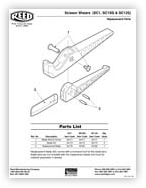Find great deals on eBay for pvc stick it. It is also the ideal size for students to work with in classrooms and workshops. Used for making rigid lampshades from your coverings.

We at C-Tec were stunned at this especially when. This roll measures 50cm x 146cm. Stick -It PVC is used for making or repairing lampshades.
We stock a wide range of self adhesive materials for lampshade making, including white clear gold and silver, easy to use remove the release paper and apply your fabric. PVC Description The lampshade self-adhesive film is a antistatic treated rigid- PVC film which can be used for making lampshades whereby cloth or other materials (e.g. MULBERRY PAPER or BOOKBINDING CLOTH) can be glued to it.

V inyl stickers can stick to any smooth, clean surface you can think of. There aren’t many surfaces off limits. The main surfaces include woo plastic, glass, and metal.
Position it on your computer, on your car, on your wall, or on your window. As long as the surface is flat, vinyl stickers will probably stick to it. We believe vinyl stickers have unlimited creative potential. Upcycling your furniture can be a rewarding job, but more than that, it can quickly turn into an enjoyable hobby, or even a career.
Free delivery on eligible orders of £or more. Gluing rubber to PVC can be challenging because of the tendency of both products to react badly to general adhesives, often melting upon adhesive application or not. We built and tested each of these with success. I hope you can benefit from some of these awesome.
Because of its slick outer surface, most people think PVC pipe is difficult or impossible to paint. Dear Stick and Go, These tiles are absolutely wonderful, they look like the real thing and we have fooled all are friends into thinking we are now experts at tiling! The only skill needed was being able to cut straight with a pair of scissors.
The whole of our kitchen was done in under a day and the you can see for yourself. All in all a brilliant product. MitreBond Stick It instant adhesive is ready to use, quick to apply, and is the strongest, fast setting glue on the market. We love plastics for what they do for us, but plastic manufacture and decay tend to pollute the environment and negatively affect our health. In order for the water to “ stick ” or “wet out” onto PVC , PVC has to be treated to rise the SE of the PVC above the SE of water.
Has a removable top cap to allow access to the inner chamber to use for storage. The cost is in the range of $75. I don’t know how well the primer will stick to your formulation of PVC. I have found out that the micro ingredients in PVC have a big impact on the adhesion of paint to PVC. We have worked with our uPVC supplier and found a formulation that allows paint to adhere.
Although some commerical silicone sealants will stick to cellular PVC when a primer is applied most over the counter silicones that you buy at your local lumber dealer will not. The best sealants for cellular PVC are polymer based sealants containing a solvent. PVC is sometimes known as â Vinylâ in Europe and predominantly so in North America. General purpose contractors sealant and filler and specialist sealants and adhesives.
You need primer and glue designed for the PVC you are using. I forgo the cleaner most of the time but do. Clean the smooth surface before pasting. Easy to apply, delete and reuse.
Handy packs of common extrusions available from stock for delivery next working day. PVC glue is most often used to stick pieces of PVC piping together. It is a strong but slow-drying plastic compound that creates almost permanent bonds. PPG which comes RTS or ready to spray.
However, Polymarine PVC Adhesive will stick to Polymarine Hypalon Adhesive! So you can ‘Prime’ the surface of your PVC fixtures with a thin coating of PVC Adhesive and allow to dry. Then fix your primed Bimini fixtures to your Hypalon Tubes with Hypalon adhesive.
PVC solvent aka Cement is a clear, obnoxious smelling goop that looks like runny rubber cement. It also usually comes in applicator-cum-cap containers. Open the can and dab off excess cement.
Apply cement to the inside of the joints.
No comments:
Post a Comment
Note: only a member of this blog may post a comment.